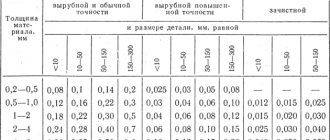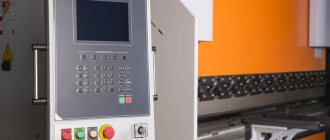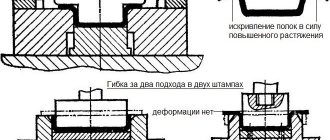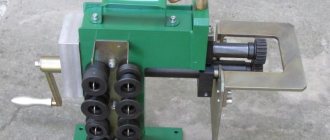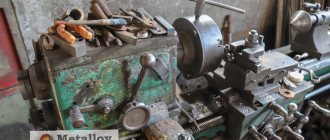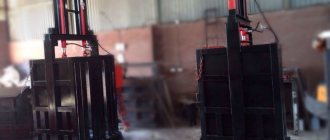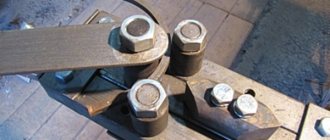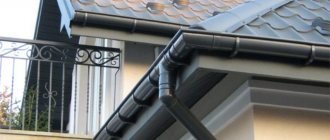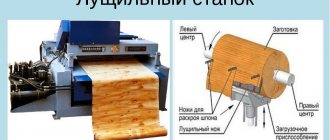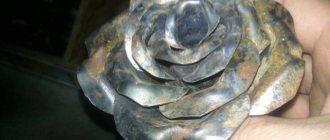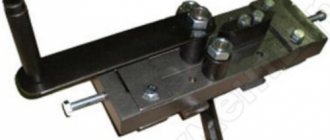The stamping press, which is used to forge metal blanks, operates according to a fairly simple scheme. The principle of its operation is essentially similar to the principle of operation of a conventional hammer, which is used to strike a metal product in order to deform it and give it the required configuration.
Mechanical presses type K2130 are used in cold sheet stamping areas
Hydraulic and crank type stamping presses
From the moment people learned to perform metal forming, the work of the specialist who did it was considered one of the most honorable. Over time, the need for metal products obtained using forging technology only increased, and the actively developing industry began to need them. All this led to the fact that for forging, not the manual labor of blacksmiths, but special equipment for stamping was used.
A fairly common type of device used for forging is a kind of hammer analogue - a stamping press. Using such stamping equipment, it is possible to perform a whole list of technological operations, namely: changing the shape of the workpiece by means of its plastic deformation, forming a given relief on its surface, cutting out individual fragments, etc. On such a device, in particular, they give shape to the workpieces for the manufacture of which casting was used. Presses used for stamping operations can be crank or hydraulic.
Press diagrams: a – vertical hydraulic; b – horizontal; c – crank; g – friction; d – hydraulic screw
A crank press is used in cases where it is necessary to perform simple metal forming by pressure. The main element of such equipment, which converts the rotational movement of the drive motor shaft into reciprocating movement of the slider, is the crank mechanism. That is why a crank press is often called a stamping crank press. It is very popular both among manufacturers and private craftsmen; there are even models of a tabletop crank press. This popularity is explained not only by the high efficiency and functionality of this equipment, but also by the fact that maintenance and repair of crank presses does not cause any special problems.
Hydraulic stamping press 4-column
Hydraulic stamping presses are equipped with two working chambers in which the required pressure is created in the working fluid. The liquid under pressure enters the cylinder with another piston, through which reciprocating motion is imparted to the slide.
Exploitation
Before you start working with the pressing machine, you must familiarize yourself with the operating rules:
- When processing metal products, you need to check the working surface of the workpiece. It must be free of defects.
- Check the integrity of parts and connecting elements. If there are cracks, dents, or bumps in the metal, it is necessary to replace the broken parts.
- Before starting the equipment, check the nozzle on the rod.
- Do not attempt to compress high-strength alloys or types of metals on weak equipment.
- If there is a leak of working fluid, it is necessary to replace the broken element, drain the oil, and fill in new one.
For additional reliability, clamps or a vice are used that will hold the parts during processing. The work table must be molded to withstand high pressure.
Hydraulic presses are equipment for transferring pressure to metal products. Hydraulics work thanks to fluid moving through the system. It acts on movable pistons, which begin to move, transmitting force to the working surface. Depending on the type of drive, the impact on the part of the master increases or decreases.
Check before launch
Radial forging equipment for hot metal processing
A radial forging machine is used to produce shafts of various diameters with high productivity. With such a unit it is possible to set up production of up to 300 thousand finished products per year, which is quite enough to supply a large manufacturing enterprise with them.
The limited use of such a machine for metal stamping is explained not only by its high cost, but also by the fact that setting up its operating modes is a rather complex process, so it is advisable to perform it only if you plan to produce products of a certain diameter in large quantities.
Radial forging machine (RFM) ensures high stamping accuracy, producing parts with minimal allowances
The sequence of actions during which radial forging is performed is as follows.
- The part is fed into an induction device to bring it to the required heating temperature.
- After the metal acquires the required degree of plasticity, the part is sent along a roller container (rolling table) to a gripping device, with the help of which it is fed into the processing zone.
- There, the workpiece is fixed by elements of another gripping device, after which it is acted upon using special strikers.
- To ensure uniform processing on all sides, the part is constantly rotated, for which a special gripping mechanism is used.
Schemes of operation of forging machines of radial and rotary type
In order to set in motion the working mechanism of equipment for radial forging, a kinematic diagram is used, the elements of which are:
- drive motor;
- V-belt transmission;
- four vertically mounted shafts with eccentric axle boxes;
- a connecting rod with a striker and a slider attached to it.
The main automatic elements of the machine are the tracing drums, which are responsible for both the synchronous approach of the strikers and the subsequent movement of the workpiece. The rotation of the grip in which the workpiece is held is imparted by an electric motor through the worm gear elements. The braking of this mechanism, which occurs during forging, is provided by a spring clutch.
One of the types of forging equipment is a horizontal forging machine, in which the workpiece is also located parallel to the ground. Devices of this type are used primarily for forming end thickenings on rod-type workpieces. During processing, the part is located in a split matrix, the channels of which are oriented in the horizontal plane.
The processing process performed on such a machine occurs in the following sequence.
- The workpiece is placed in the stationary part of the matrix.
- The moving part of the matrix, connected to the slider, is driven by the crankshaft.
- Approaching the stationary half of the mold, the movable part of the matrix tightly covers the processed rod.
- After clamping the part with the top of the mold, the crankshaft connected to the connecting rod drives the impact punches.
- At the end of processing, all moving parts of the machine return to their original position, and the moving and stationary parts of the mold are opened.
Forging and stamping
From the time man learned about iron, he began to look for ways to make it stronger, more reliable and at the same time give it the desired shape. Sponge iron was beaten with cold hammers to give the metal the desired shape and remove impurities from it. Then, to make it easier to solve this problem, they decided to beat it while it was hot. This method was called hot forging.
Forging is one of the most ancient methods of metal processing. In the distant past, the tools of a blacksmith’s labor were an anvil, a hammer and simple tools: bits, chisels, smoothers, etc. In the 16th century. hammers appeared that were driven by the energy of moving water (water drive).
This made it possible to increase the mass of the hammer (falling striker) by 10-15 times - up to 400 kg. The impact force of such a hammer naturally increased significantly. With the advent of steam engines, new opportunities opened up for increasing the force of a hammer blow. Almost simultaneously with the steam locomotive, the steam hammer was born.
Air driven forging hammer
A pneumatic press is an efficient, but at the same time affordable forging equipment, which is also distinguished by its compact dimensions. This machine operates using the energy of compressed air, which is supplied to the mechanisms by a built-in compressor. The operation of the compressor, the pistons of which, moving in its main cylinder, create an air flow with the required pressure, is ensured by a drive electric motor.
Since the impact mechanism of a pneumatic forging machine is operated by a crank, its design resembles that of a crank press. Before starting such equipment, the compressor and working pistons in the master cylinder are in their highest and lowest positions. When the machine is put into operation, the pistons begin to move towards each other, compressing the air between them, the pressure of which is transmitted to the crank, directly connected to the striker. For one blow of the working part of the hammer of a pneumatic machine there is one revolution of the crank mechanism. Accordingly, in order for the hammer to act on the workpiece at a higher frequency, it is necessary to ensure more intensive operation of the compressor. Even despite its small dimensions, a pneumatic press can provide a hammer impact weight of up to 1 ton.
Pneumatic forging hammer MA-4129 is designed for hot stamping in open dies
A steam-air hammer operates on a principle similar to a pneumatic press, in which the impact energy is provided by hot steam supplied directly from the boiler or through a special compressor. The mass of impacts that such equipment allows to achieve can reach up to 8 tons, and the speed of their application is 50 m/sec. Depending on the model, it can work in automatic mode, when blows are applied to the part continuously, or in manual mode, when the corresponding button or pedal must be pressed to activate the striker.
Mechanical hammers can be used for:
- free forging or forging operations in which a mold is used to form the finished product;
- stamping operations with sheet metal parts - cutting along a straight or curved line, cutting along various contours, punching holes (punching press), etc.;
- punches - making products using a special template.
Overview of IPONMAC presses and their characteristics
| Model series | KD 23D | HL41 | PG41 |
| Nominal force, t | 10-80 | 40-315 | 40-315 |
| Opening height/clearance, mm | 130-280 | 800-1600 | 800-1600 |
| Table/bottom plate size, mm | up to 520*860 | up to 1400*1200 | up to 1400*1200 |
| Drive power, kW | 1,1-7,5 | 5,5-30 | 5,5-30 |
| Weight, kg | 600-5280 | 3000-36000 | 3-36000 |
Series KD 23D Series HL41 Series PG41
Rotary and roller forging equipment
At large manufacturing enterprises, roller-type conveyor equipment is often used to perform forging operations. The workpieces are processed using the crimping method, which is performed by rotating rollers. Rotary forging machines operate on a similar principle, the processing of parts in which is also carried out during the rotation of the working bodies.
The rotational forging method ensures waste-free processing of workpieces
Specialists who professionally engage in forging and stamping operations have to solve a number of issues in order to obtain a product of the required quality. Among such issues, in particular, are the choice of equipment, the development and production of molds, and the equipping of machines with various tools and devices.
Manufacturers and price
You can find many types of hydraulic presses on the world market. Many of them are not of high quality, which complicates the choice of equipment. Manufacturers producing hydraulic machines:
- Stankoimport;
- OMA/Werther;
- AE&T;
- Sorokin.
The cost is influenced by various factors:
- equipment dimensions;
- power;
- availability of additional functions;
- piston stroke;
- manufacturer's fame;
- type of drive.
The cost of a manual hydraulic press is 200 thousand rubles. Industrial equipment costs an average of 600 thousand rubles.
Types of stamping technologies
The stamping process of processing blanks can be carried out using the hot or cold method. These technological varieties involve the use of special equipment and the use of certain metal processing conditions.
Cold stamping is one of the types of stamping
The hot stamping method processes workpieces that are preheated in special devices to a given temperature. Hot stamping is necessary when there is not enough equipment power to process a cold alloy. Heating devices can be electric or plasma ovens. This method requires accurate calculation of the parameters of the finished part, taking into account the shrinkage of the metal during the cooling process.
In cold stamping, parts are formed due to the mechanical pressure of the elements of the stamping press. Cold stamping is considered a more common method of metal processing. It does not require additional equipment, complex calculations or mechanical modification of parts. Thanks to this method, the strength properties of the material increase. The resulting products are distinguished by high surface quality and precision.
Hot stamping presses
Stamping on crank hot stamping presses (CGSP) successfully replaces, and in many cases surpasses, in terms of technological capabilities, stamping on hammers. Forgings with increased dimensional accuracy can be produced at the CGSP due to the constant stroke of the press. KGSHP make it possible to increase the coefficient of metal utilization, since the dies are equipped with upper and lower ejectors, which makes it possible to reduce stamping slopes, overlaps and tolerances. In addition, stamping on a CGSP is 1.5-2 times more productive than stamping on hammers, since deformation on the press in each groove occurs in one stroke, and on a hammer - in several blows.
KGSHP are manufactured with a nominal force of 6.3. ..125 MN. The kinematic diagram of the CGSH is shown in Fig. 4.
The lower stamp 10 is mounted on the wedge-shaped plate 11, the upper stamp 9 is mounted on the slide 8 of the press. The wedge-shaped plate serves to adjust the position of the lower die in height. The slider is driven through a connecting rod 7 from the crank shaft 1. The latter is rotated by an electric motor 3 through a V-belt drive 2, an intermediate shaft 5 and gears 4. The flywheel gear 6 can rotate freely on the shaft.
Rice. 4. Crank hot stamping press : a - design diagram; b - general view.
When the press is turned on for a working stroke, a pneumatic clutch connects flywheel gear 6 to shaft 1. The shaft makes one revolution, the clutch disengages, and the brake stops the shaft at top dead center. For one revolution of the shaft, the slider makes one working stroke, lowering and rising along the guides in the frame. The table and the press slider have ejectors for removing forgings from dies
Stamping of sheet metal parts
One of the most common metal processing technologies is stamping. With its help, parts are produced for all sectors of the national economy. The use of stamping makes it possible to obtain parts of different sizes and shapes from a flat sheet.
Sheet metal stamping
Technology of stamping parts from metal sheets and its types
Sheet metal processing is the process of obtaining parts of the required shape and specific size. The work of forming parts takes place on special equipment using a tool called a stamp.
When talking about parts made from sheet metal, you need to understand that serious pressure is put on the workpiece. Stamping technology began to be used in ancient times. Thus, they produced tools for cultivating the land, dishes, and jewelry.
Stamping of parts from metal sheets
Nowadays, this technology is widely used in the production of sheet metal parts of different sizes and shapes. This type of processing is widely used in automobile construction in the production of body parts.
Cold and hot sheet metal stamping
The production of sheet metal parts can be done cold or hot.
Cold stamping
The use of cold forming is considered the most effective way to process sheet metal. The use of this method is carried out in cases where there is no need for further mechanical processing, for example, cutting. This method of obtaining parts is most often used in the manufacture of automotive parts, structural elements of aircraft, and a number of others.
Using the method of cold metal forming allows for significant savings in sheet metal, of course, with proper cutting of the sheet and correctly manufactured die equipment. Stamping is most effective in large-scale and mass production.
This method shows the greatest efficiency when working with steels such as carbon and alloy. In addition, parts made from many non-ferrous metals, such as copper or aluminum alloys, are produced by stamping.
Cold stamping of sheet metal
In addition to sheet metals, the sheet stamping method can also be used to produce parts from rubber, cardboard and many polymers.
By the way, such metal processing improves its strength parameters.
Hot stamping
This method of sheet metal processing is used in the production of parts for boiler plants and some parts used in shipbuilding. For such parts, steel sheets with a thickness of 3–4 mm are used.
The technological operations used in hot stamping are in many ways similar to those used in cold sheet metal processing. Engineers developing sheet metal processing technologies must take into account that the parts must be heated to a certain temperature. Accordingly, phenomena such as sheet metal tightening must be taken into account when making holes, bending and a number of others. In addition, when parts cool, it is necessary to remember about the resulting warping.
Hot stamping of sheet metal
All this leads to changes in the tolerances on the dimensions of parts produced from metal.
Before processing on pressing equipment, metal blanks are heated in various types of furnaces, for example, electric or gas-flame.
